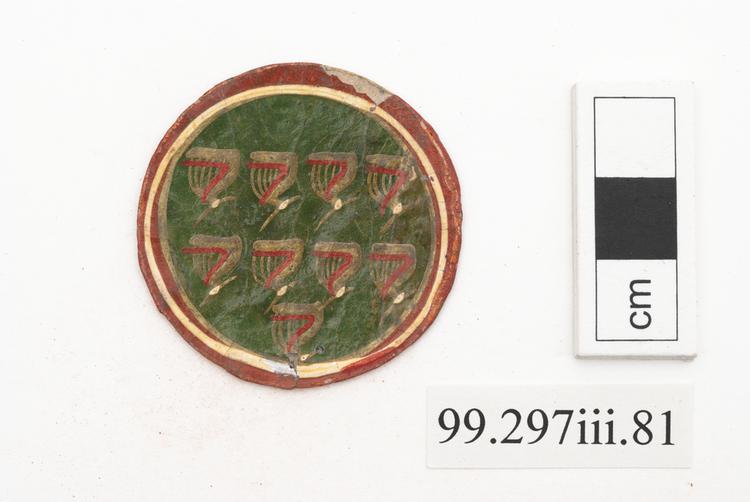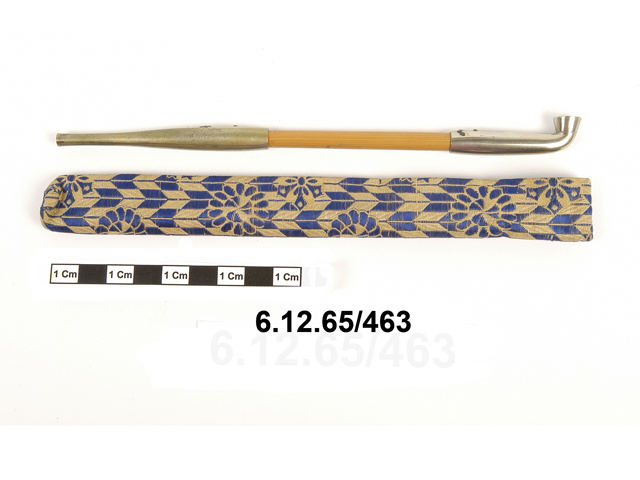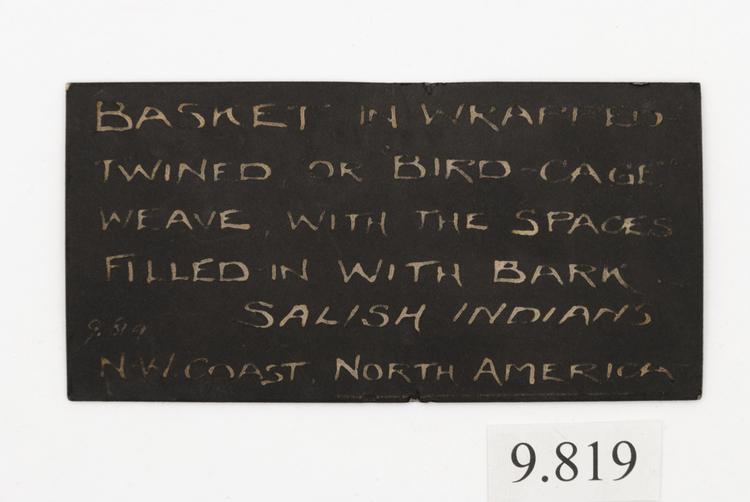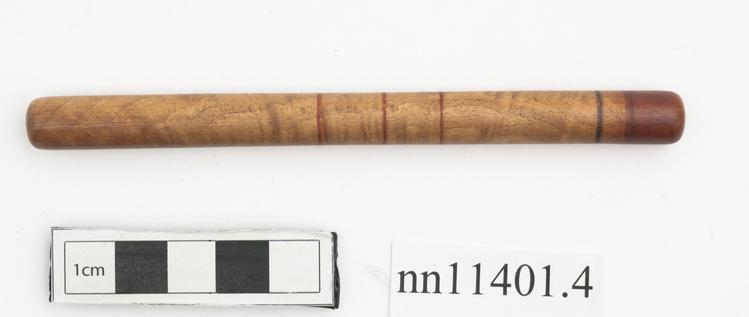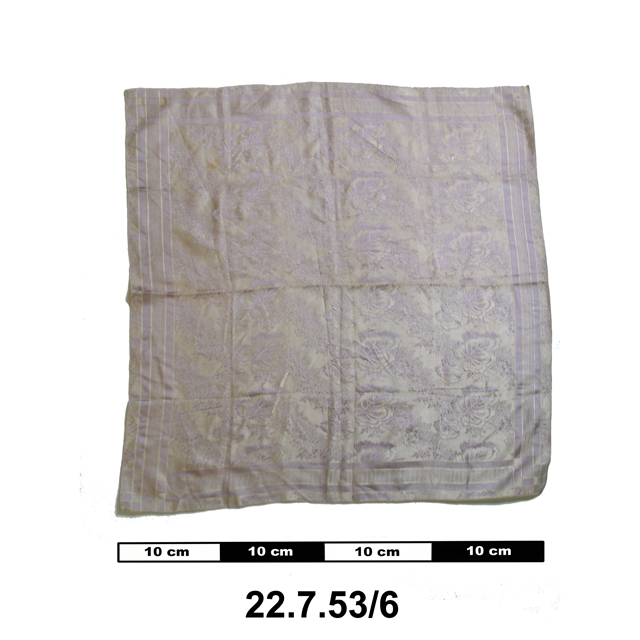
Noh actor's robe from Hagoromo. Cloth woven into a gauze from orange silk warp and a grey silk weft, making a paprika red, with gold supplementary weft. Short robe with very wide sleeves, decorated with two large phoenixes, one on either side of the robe, covering the first section of the sleeve also. The outer sections of the sleeves are plain. There is an orange silk cord attached at either side of the costume at the open front near the top, ending in each case with a tassel. There is also a cord attached to the lower end of each sleeve, one of which is still knotted. On the back are three gold phoenixes, one covering the upper back, one covering the inner and outer parts of each sleeve, and smaller vegetal motifs in the lower part of the back. There are three orange cords attached at the back, one in the centre of the back near the top, one on each sleeve. Each of these is folded and caught at the centre.
Also in this box is a rectangular piece of cloth folded into two to form a case rather the shape of a pillow case on which are the words (in Roman script) Tunamasa Shita Karaori. According to Mio Kawano, the first word is probably the name of an actor; the second means 'upper' and the third is the name of a beautiful colourful pattern. Thus the case may have once contained part of the actor's costume.



